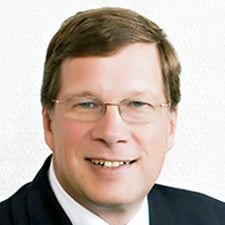In a survey of about 1,600 active neurologists, the American Academy of Neurology (AAN) found that 60 percent experienced at least one symptom of burnout. A high number of neurology residents (73 percent) and fellows (55 percent) were also affected by burnout. With such a high rate of burnout among neurologists, the AAN began mitigation attempts at the individual, organizational and national levels at the same time as they measured burnout.
“The number that alarmed me was that even though 88 percent said the work they do is meaningful to them, the number that would choose to be a neurologist again was only about 67 percent. That should be an alarm in the U.S.” said Terrence L. Cascino, MD, immediate past president of the AAN.
The academy is an inaugural sponsor—along with the AMA and more than 30 other organizations—of the National Academy of Medicine Action Collaborative on Clinician Well-Being and Resilience. The AAN is also part of the AMA House of Delegates.
The AMA offers CME on physician burnout that can help you prevent physician burnout, create the organizational foundation for joy in medicine, create a strong team culture and improve physician resiliency.
Meanwhile, the AMA’s STEPS Forward™ open-access platform offers innovative strategies that allow physicians and their staff to thrive in the new health care environment.
Committed to making physician burnout a thing of the past, the AMA has studied, and is currently addressing, issues causing and fueling physician burnout—including time constraints, technology and regulations—to better understand the challenges physicians face.
Why are neurologists so burned out, as compared with colleagues in other medical specialties such as orthopedics or ophthalmology?
Cleveland Clinic neurologist Edward Manno, MD, has offered a personal perspective on that question.
“In neurology, you have to deal with conditions that affect the very essence of the person,” he told Neurology Today. “Anything to do with the brain has the capacity to change the nature of that individual. A patient can have a very small stroke, but if it’s in a targeted area it can have a profound effect on someone’s life. Neurologists have to deal with the emotional toll of discussing this with the patient and the family.”
In 2015, Dr. Cascino launched a task force to research the issue of physician burnout—what it is, how it happens, and what can be done to deal with it effectively and improve work-life balance for neurologists. He continues this work as chair of the task force.
Find out how the AAN is addressing physician burnout and its impact on a neurologist’s lifestyle.
Individual level
The American Academy of Neurology believes that self-care is an important part of cultivating well-being and resiliency. This includes individual courses and consultations available to AAN members, as well as the creation of a website on tips, tools and strategies to combat burnout.
Some tips can be as simple as exercise, yoga, recognizing that people are in the same boat and spending more time with family—things that build individual resiliency. For example, at the academy’s annual meeting physicians can visit yoga studios and get massages. While some might find these remedies helpful in relieving stress, Dr. Cascino acknowledged they only mitigate physician burnout symptoms.
“That doesn’t cure the cause of the burnout, but it would make some people able to tolerate the issue better,” he said.
Organizational level
From work-unit to institutional challenges, conditions in the practice environment can be a significant source of burnout. The AAN provides resources focusing on ways to prevent and mitigate burnout stemming from the workplace. This might include using the electronic health record differently or implementing a daily team huddle.
One resource offered is the Live Well, Lead Well program, which is offered to cultivate well-being and resilience in physicians’ lives, increase engagement at work, and develop strong, lasting leadership skills to reduce and prevent burnout while improving well-being. Through leadership, neurologists can go back to their department or practice to share techniques to reduce burnout and promote well-being.
“We need to nurture and increase physician leadership in medicine,” said Dr. Cascino. “Physicians are more likely to understand the drivers of burnout and more likely to think of ways they can be mitigated and yet still fulfill our mission, which is to provide high-value care for patients.”
National level
Managing electronic health records and other clerical tasks can play a significant role in burnout, and the AAN is working to address this at the national level.
“We want to make it clear to Congress and CMS that what they’re doing—in what may be well-intentioned efforts to try to increase the value of health care—is unintentionally contributing to burnout,” said Dr. Cascino. “The American Academy of Neurology has spent a lot of time going to Congress to talk about the causes of burnout and will continue to do so as we work to decrease regulatory hassles for neurologists and all physicians”
At the national level, the AAN is addressing neurologist burnout through:
- Practice resource information, templates and educational programming about EHRs.
- The academy’s Palatucci Advocacy Leadership Forum, which offers training to neurologists on how to promote state and federal legislation, develop coalitions, organize and reinvigorate state neurological societies, lobby for fair payment and help draft position statements that affect future legislation.
- Organized visits with lawmakers on Capitol Hill to address contributors to physician burnout such as regulatory burdens.
- A registry tool for physicians to more easily meet regulatory requirements and improve quality of care.
“It is not going to be an easy fix and we understand that,” Dr. Cascino said. “Neurologists are collaborating with physicians in other specialties to find solutions.”




